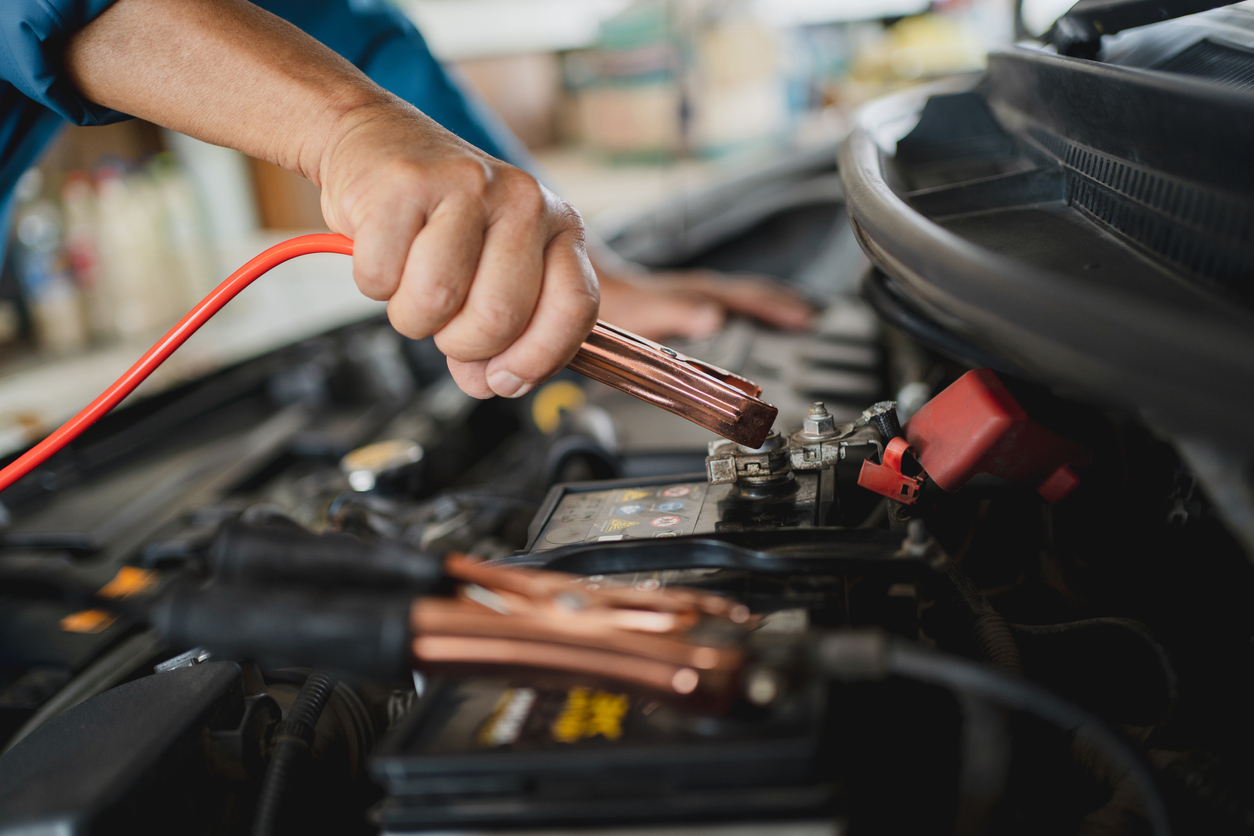
If your car battery has died, you’re not alone. It’s a common issue that can happen to anyone. Luckily, jump-starting a car is a simple process that can save you from having to call a tow truck or mechanic. In this blog, we’ll guide you through the steps to jump-start your car safely and easily.
Step 1: Check Your Battery
Before you begin, inspect your battery to ensure it is properly attached and free of corrosion or leaks. These issues can cause the battery to fail, so be sure to address them before attempting to jump-start your car.
Step 2: Gather Tools
You’ll need a few items to jump-start your car, including a set of jumper cables and a working car with a charged battery. Jumper cables are typically black and red with clamps on both ends and can be found at your local auto parts store or here at Bokman of Wellsville. Park the working car close enough to your vehicle so that you can safely attach the jumper cables to both batteries with ease.
Step 3: Attach Cables
Start by ensuring both cars are turned off before attaching the jumper cables. Locate the positive and negative battery terminals on each car, terminals are usually color-coded and labeled with a plus (+) or minus (-) sign.
Attach one end of the positive (+) cable (usually red) to the dead battery’s positive terminal. Do the same for the support car’s positive terminal. Take one end of the negative (-) cable (usually black) and attach it to the good battery’s negative terminal. Finally, attach the other end of the negative cable to the dead car’s negative battery terminal or an unpainted piece of metal on the car.
Step 4: Start the Working Car and Wait
With both vehicles properly connected, start up the working car and let it run for 15 to 20 minutes. As it runs, the charging system will begin to charge the dead battery on your vehicle.
Step 5: Try Starting Your Car
After fifteen to twenty minutes, attempt to start your own car. If it starts up, congratulations – you’ve successfully jump-started your vehicle! Next, disconnect the cables in the opposite order you connected them, taking care not to touch the metal parts of the cables together as you remove them. Remove the negative (-) cable from your car’s battery, then the negative cable from the support car’s battery. Do the same for the positive (+) cable on each vehicle.
Once you disconnect the jumper cables, you’re done! Wasn’t that easy?
Step 6: If Your Car Doesn’t Start
If your car still won’t start, try repeating the process. If it still doesn’t work, you may need to get a new battery or have your car inspected by a mechanic here at Bokman of Wellsville.
Final Thoughts
Jumpstarting your car is easy and a practical skill that every driver should know — but prevention is always better than cure. Ensure that you turn off all lights and electronics in your car when the engine is not running. This will help prevent your battery from draining. Regularly maintaining your battery by cleaning it and checking for leaks or corrosion will also help prolong its lifespan.
With the right tools and knowledge, knowing how to jump start a vehicle can put you back on the road quickly and avoid a costly tow truck call. Remember to always handle jumper cables with caution, as they contain electricity that can be dangerous if not used correctly. Follow these steps, and you’ll be more than ready to jump-start your car the next time your battery dies on you.






